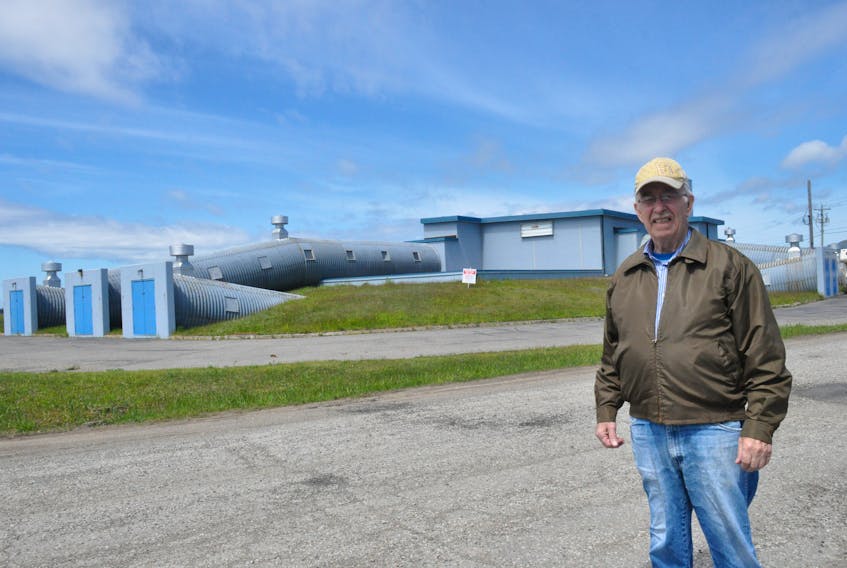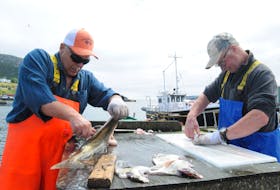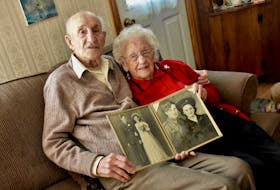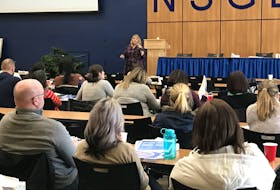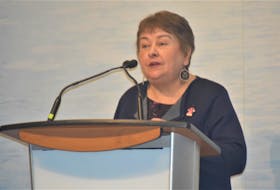Bill Pilgrim has more than a few stories to tell.
The 83-year-old Stephenville native is a natural storyteller and for the past decade he’s been uncovering and sharing the history of the French Shore region.
Pilgrim has taken an active interest in a number of historical subjects over the years, including the arrival and livelihood of the Acadian settlers around Stephenville, the American presence in Stephenville during the Second World War, and the landing of John Cabot in Newfoundland.
His contributions to preserving local history are certainly appreciated locally. One local author believes they deserve wider attention.
Mercedes Benoit-Penney, a member of the Stephenville Historic Cultural Association, can attest to Pilgrim’s contributions in preserving local history as well as anyone.
Some of his research has been incorporated into Benoit-Penney’s book Back of the Pond, which discusses the livelihoods of the French Acadian and Mi’kmaq residents of Stephenville before their lives were upended with the establishment of the American Air Force base in 1941.
“I wish there was an award this guy could get,” Benoit-Penney told SaltWire. “He never stops. Bill’s research means everything to Stephenville, whether another person sees it or not.”
The Stephenville Historic French Cultural Association's mission statement is, “To establish a central focal point for the historical record of the French language and the culture that existed in the Stephenville area prior to the establishment of the Ernest Harmon Air Force Base.”
To that end, Benoit-Penney believes Pilgrim’s research is of major importance.
Pilgrim first developed a passion for history while researching his family genealogy.
In the course of that research, he started learning more about the history of the region.
There’s been no turning back.
As Pilgrim recounted to SaltWire the development of his passion, he was disposed towards re-telling the stories that had so powerfully captured his attention.
He was intrigued by the story of Ann Hulan (nee Serle), an early settler of Bay St. George who lived in the 18th and 19th century.
Her agricultural work had impressed explorer W.E. Cormack, who wrote of her in his diary.
“The more I got into it and the more I found it, the more interesting it became,” said Pilgrim.
He later became involved in research for Benoit-Penney’s books.
Recently, Pilgrim has taken a keen interest in theories about the landing of John Cabot in Newfoundland in 1497.
He subscribes to the Cape Breton landfall theory, that evidence points towards Cabot first landing in Cape Breton before reaching the shores of Cape St. George and then sailing along the south coast before heading back to England.
The theory denies conventional wisdom that Cabot landed in Bonavista.
He cites the Cape Breton landfall argument as summarized on the Heritage Newfoundland website as well as research conducted by academics.
Pilgrim also believes the topography described in letters from Cabot’s crew matches a description of the southwest coast, not Bonavista or the Avalon.
He’s since given presentations on this topic locally and hopes to do more to spread the word on what he believes is the truth about Cabot’s Newfoundland expedition.
The Cuban Missile Crisis in Stephenville
Bill Pilgrim doesn’t always have to uncover interesting stories about Stephenville through his research. Some of it he’s lived through, including a moment in time when nuclear annihilation seemed imminent.
The United States Air Force had founded the Ernest Harmon Air Force Base in Stephenville in 1941 and continued to operate it until 1966.
Pilgrim grew up on the base and, as an adult, was employed there for seven years until its closure.
He remembers October 1962 quite well.
“We were preparing for nuclear war then,” he told SaltWire Network. “I was working and I was one of the participants who had to do with the preparations.”
Pilgrim worked as a scheduler with the 4081st Civil Engineering Squadron. During the missile crisis, he had to relay assignments.
“I found myself in the bunker with a radio and the colonel, our commander, and we were directing the equipment and the personnel for any aircraft that would crash, land or take off,” he recalled. “We had equipment on each side of the runway to push the aircraft off the runway in case it crashed. All that equipment came under our jurisdiction.”
Fortunately, the confrontation between the United States and the Soviet Union de-escalated and the world avoided nuclear war.
In the summer, Pilgrim shows tourists around the base and regales them with these stories.
But he knew the severity of the situation.
“It was quite a haunting experience for me,” he said. “I was quite aware of these nuclear bombs and their destructive power.”
Pilgrim says any American bomber base, fuelling base or interceptor base would have been a primary target for the Soviet Union.
That included Stephenville and Goose Bay.
“This is not generally known by people in Newfoundland,” he said.

